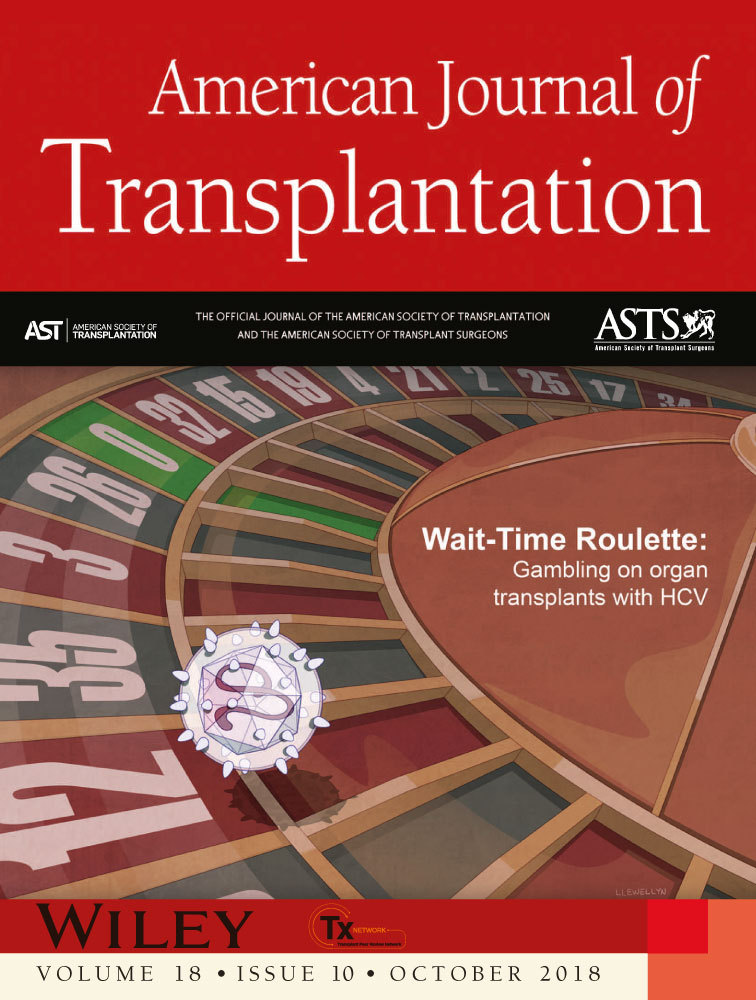Information overload; a response to “Turn down for what? Patient outcomes associated with declining increased infectious risk kidneys”
See also: Bowring
“Donors are heroes” is a transplant axiom. Unfortunately, many history elements that go into labeling a donor public health service-high risk (PHS-HR), ie, increased risk for transmitting HIV, hepatitis C (HCV), and hepatitis B (HBV), chip away at this dictum because of associated stigma. We read the article by Bowring et al1 and applaud their work that showed accepting PHS-HR kidneys conferred substantial survival advantage. In 2016, 24.9% of all deceased donors were PHS-HR2 and more than 300 such organs are discarded annually. Guidelines about timing of PHS-HR education, beyond consenting immediately prior to transplantation, are lacking. Information overload is common with administering this consent, especially because only 12% of adults have proficient health literacy.3 If education is done only at the time of donor offer, the likelihood of candidates balking is high and discussion about specific behaviors might impinge on donor confidentiality. If done preemptively, how is this information filtered especially when coupled with other aspects of kidney transplant education?
There are now substantial data on PHS-HR organs. HIV is of greatest concern to candidates, but its risk is best described as miniscule, with transmission risk for nucleic acid test (NAT) negative donors being ≤ 0.12% across all PHS-HR categories.4 With no documented transmission since 2013, despite an increased use of PHS-HR organs, ≤ 0.12% is likely an inflated estimate. HCV risk has variability between donor history elements with the donor discovered with needle in arm proceeding rapidly to donation thought to have a 3% risk of NAT negative transmission.2 The intravenous drug use category confers a 0.32% risk of transmission, whereas for all remaining categories, it is ≤ 0.12%.5 HBV is of less concern because dialysis units utilize vaccination programs to achieve seroconversion. Although screening methodology is not foolproof because of reliance on surrogates to obtain donor history and the rare potential for lab error, but this is factored into historical data.
Donor-derived disease discussion is integral to transplant education. Do diseases that have extremely low risk require an independent consent? Consenting for HIV risk as part of PHS-HR is incongruent with other rare donor-derived transmissions that may have greater lethality. Patients doing in-center hemodialysis incur an incremental risk of 0.34% per year of acquiring HCV.6 Thus, declining a PHS-HR except for “needle in arm” donors is not a risk mitigation strategy for HCV transmission. The advent of direct acting antivirals revolutionizing HCV treatment further supports PHS-HR use.
With the robust data available about PHS-HR kidneys, it is apparent that offering a choice only increases the likelihood that a candidate may choose wrongly. Considering the extremely low risk of contracting HIV from a PHS-HR donor and relatively high risk of acquiring HCV from in-center dialysis, the PHS-HR consent conveys inflated risks and no longer seems to serve its purpose. Meanwhile, transplant personnel should impart accurate education on transmission risks to candidates and provide real life comparators for contextual purpose. PHS-HR consent conversion rates should be included in transplant centers’ quality improvement programs. To support PHS-HR organ usage, consent discussions should focus only on the transmission risks of the donor offer and details of behaviors are best left out of the process. This protects donor confidentiality without compromising the candidate’s right to know. PHS-HR labeling continues to have value for posttransplant surveillance. But enough is now known that the current PHS-HR process of consenting needs to change.
DISCLOSURE
The authors of this manuscript have no conflicts of interest to disclose as described by the American Journal of Transplantation.




